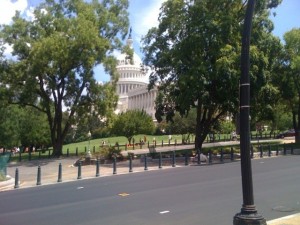As August begins I find myself trying to fit more contemporary reading into my research and writing schedule. It’s always a pleasure to catch up on recent books by Wesleyan authors, and I have Sebastian Junger ’84, Dominique Browning ’77 and Ayelet Waldman ’86 on my list. One of the novels I really enjoyed this summer was written by a guy who was on my frosh hall at Wes, Joseph Wallace ’79. When we were just beginning our college careers we talked incessantly about writing and music, and more than a little bit about baseball. Joe joined Alpha Delta Phi around the same time I did, and he has been writing (often about baseball) ever since. This year Touchstone published Diamond Ruby, a wonderfully entertaining historical novel set in New York during Prohibition. Ruby Thomas, the main character in the book, is a cracker-jack pitcher who has to struggle to survive after the great influenza epidemic. She takes care of her young nieces and herself by continually surprising spectators with her pitching prowess, from a Coney Island sideshow attraction to pitching against the Babe in Yankee Stadium. Ruby’s character is inspired by Jackie Mitchell, a young woman who actually did strike Ruth out before she was banned from baseball for being a woman. Ruby’s intelligence, courage and determination go far beyond her performance on the diamond, and it makes for a great story.
I’m always eager to read our Wesleyan authors, and I’m filled with pride as I mark their accomplishments. This morning, for example, I was delighted to see Maureen Dowd interview Sam Wasson ’03 in the New York Times about today’s (awful) romantic comedies. Sam’s recent book on Breakfast at Tiffany’s is a big hit. But I don’t want to give the impression that I only read books by Wesleyan authors. I’ve reviewed a new book about the Dreyfus Affair for the San Francisco Chronicle, and Milan Kundera’s new collection of essays, Encounter, for the Los Angeles Times (to appear later this summer). I’m also a big fan of Jennifer Egan’s writing, and her new novel, A Visit from the Goon Squad, has been a troubling, joyful and invigorating read.
This summer, though, it has been especially sweet to think back to 1975 and my hallmate’s writing plans as I read Diamond Ruby. As the baseball season heats up and summer winds down, Joseph Wallace’s new novel is perfect company.
[tags]Sebastian Junger ’84, Dominique Browning ’77, Ayelet Waldman ’86, Joseph Wallace ’79, Diamond Ruby, Maureen Dowd, Sam Wasson ’03, The New York Times, Breakfast at Tiffany’s, Jennifer Egan, A Visit from the Goon Squad[/tags]



